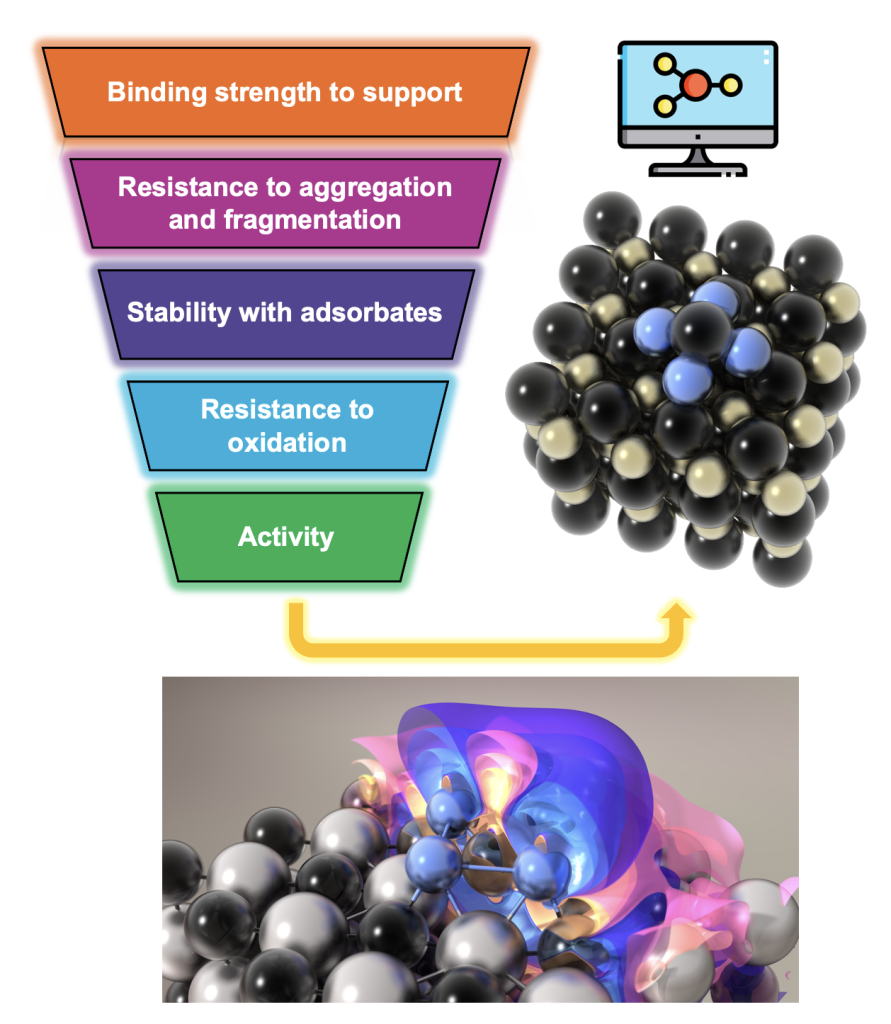Stability and reactivity of metal nanoclusters supported on transition metal carbides

Human activity has increased the amount of methane and carbon dioxide in the atmosphere, contributing to climate change. Therefore, there is an imperative for the transformation of these two gases into useful chemicals. To this end, we have employed state-of-the-art computer simulation techniques to find novel efficient catalysts for the the conversion of methane and carbon dioxide to useful chemicals. In particular, we have studied the stability and ability to adsorb and dissociate methane and carbon dioxide of a large set of novel materials consisting of 77 different combinations of metal nanoclusters supported on transition metal carbides, which are relatively cheap to synthesise and have demonstrated outstanding catalytic performance for some reactions. To date, however, only four of them have been tested experimentally and it is unclear which combinations may best catalyse which chemical reactions. From the generated database, we have unravelled trends and simple descriptors for their stability. We have identified 8 combinations as promising catalysts, all of them being new for experimental validation.
Authors: Hector Prats and Michail Stamatakis
https://pubs.rsc.org/en/content/articlelanding/2023/na/d3na00231d
